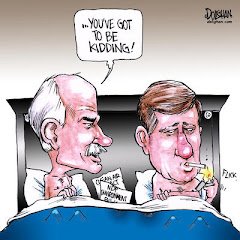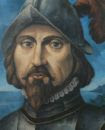


Mrs. Smith 13 Nov 07
Education 401 Grade 8/Civil War
I. Pre Instructional Phase
1. NYS Standards:
SS Standards 1, 3& 5- Students will use a variety of intellectual skills to demonstrate their understanding of major ideas, eras, themes, developments, and turning points in the history of the United States.
- use a variety of intellectual skills to demonstrate their understanding of the geography of the interdependent world in which we live- local and national - including the distribution of people, places and environments over the Earth’s surface.
- use a variety of intellectual skills to demonstrate their understanding of the necessity for establishing governments; the governmental system of the United States and other nations; the United States Constitution; the basic civil values of American constitutional democracy; and the roles, rights and responsibilities of citizenship, including avenues of participation.
ELA Standards 1, 3, &4- Students will read, write, listen, and speak for:
- information and understanding.
- critical analysis and evaluation
- social interaction
2. Lesson Objectives: (LWDAT= Learner Will Demonstrate Ability To)
Cognitive:
a) Given the stories and information presented in the Seward House, LWDAT identify and describe Seward’s role in the Lincoln administration.
b) Given the stories and information presented in the Seward House, LWDAT identify and describe the relationship between Seward and Lincoln during the Lincoln administration.
Affective:
a) LWDAT give the proper attention and respect to the adult tour guides.
b) LWDAT be in a group with his or her peers and pay attention to the tour without fooling around with his or her friends.
3. Content:
Concept- Students will learn about Seward, the Seward family and Seward’s role in the Lincoln government. Before going to the field trip students will be learning about the civil war, Seward, and Seward as an abolitionist.
Key Vocabulary-
abolitionist
administration
Task Analysis- Students will be given a tour of the Seward House in Auburn, New York
- Focus will be on the relationship between Seward, Harriet Tubman, and other abolitionists
- On the relationship between Seward and Lincoln
- Seward’s role in the Lincoln administration
4. Instructional Aides/ Resources
- Tour phamlet
- Study guide
5. Student Modifications:
- positive reinforcement for students that have classroom disturbance problem
II. Interactive Phase
6A. Set/ Focusing Event:
“Today we will be touring the Seward House. William Seward, who was given the house from his father-in-law, served many different political positions in the government, including: statesman, Secretary of the State, Senator, and New York Governor. He and his wife, Frances, were active abolitionists who were friends with Harriet Tubman and helped with the Underground Railroad by hiding runaway slaves in the Seward House. There are seventeen rooms in the house that have been preserved by the museum personnel and will be toured by the students. There is an extensive library with many rare first edition books that Seward collected, amazing pieces of art by well known artists, and collections of souvenirs that Seward had brought back from his travels.
“The first thing that I want to say is that after we are done with the tour, everyone will be responsible for writing a reflection on your impressions of the house and your favorite part of the house. Also, later on we will be working on a project together about the house. This means that all students must make sure that you pay close attention to what you are being told about the Seward House and the Seward family. Next, I want to talk about how we are going to act. Remember that I expect everyone to respect all adults and no horsing around with each other. There are priceless artifacts in this house and we do not want to ruin anything. If there are any questions you want to ask the tour guides, then raise your hand just like you would in our classroom. I expect everyone to be on their best behaviors because you are representing our school and we want everyone to think our school has well behaved students. Now please split into the two pre assigned groups and we will begin the tour. ”
***Have the tour and make sure that students are behaving
Formative Check: Answer all questions that students in the group have and the reflection that students hand in.
Closure:
“I hope that everyone had a good time at the Seward House and learned a lot of neat things about him and his family.
Extending Activity:
“For homework, write a reflection about the Seward House and your favorite part of the house that has to be at least one page in length, but can be longer.
“Looking ahead, we will also be doing a poster project on the Seward House. I will have five groups of five people that I will assign within the next couple of days. We will go to the library and do some further research on Seward, his role in the Lincoln administration, and anything else interesting about him and his family. I will be handing out a rubric when we start the research, so you guys will know exactly what I expect from you.
Education 401 Grade 8/Civil War
I. Pre Instructional Phase
1. NYS Standards:
SS Standards 1, 3& 5- Students will use a variety of intellectual skills to demonstrate their understanding of major ideas, eras, themes, developments, and turning points in the history of the United States.
- use a variety of intellectual skills to demonstrate their understanding of the geography of the interdependent world in which we live- local and national - including the distribution of people, places and environments over the Earth’s surface.
- use a variety of intellectual skills to demonstrate their understanding of the necessity for establishing governments; the governmental system of the United States and other nations; the United States Constitution; the basic civil values of American constitutional democracy; and the roles, rights and responsibilities of citizenship, including avenues of participation.
ELA Standards 1, 3, &4- Students will read, write, listen, and speak for:
- information and understanding.
- critical analysis and evaluation
- social interaction
2. Lesson Objectives: (LWDAT= Learner Will Demonstrate Ability To)
Cognitive:
a) Given the stories and information presented in the Seward House, LWDAT identify and describe Seward’s role in the Lincoln administration.
b) Given the stories and information presented in the Seward House, LWDAT identify and describe the relationship between Seward and Lincoln during the Lincoln administration.
Affective:
a) LWDAT give the proper attention and respect to the adult tour guides.
b) LWDAT be in a group with his or her peers and pay attention to the tour without fooling around with his or her friends.
3. Content:
Concept- Students will learn about Seward, the Seward family and Seward’s role in the Lincoln government. Before going to the field trip students will be learning about the civil war, Seward, and Seward as an abolitionist.
Key Vocabulary-
abolitionist
administration
Task Analysis- Students will be given a tour of the Seward House in Auburn, New York
- Focus will be on the relationship between Seward, Harriet Tubman, and other abolitionists
- On the relationship between Seward and Lincoln
- Seward’s role in the Lincoln administration
4. Instructional Aides/ Resources
- Tour phamlet
- Study guide
5. Student Modifications:
- positive reinforcement for students that have classroom disturbance problem
II. Interactive Phase
6A. Set/ Focusing Event:
“Today we will be touring the Seward House. William Seward, who was given the house from his father-in-law, served many different political positions in the government, including: statesman, Secretary of the State, Senator, and New York Governor. He and his wife, Frances, were active abolitionists who were friends with Harriet Tubman and helped with the Underground Railroad by hiding runaway slaves in the Seward House. There are seventeen rooms in the house that have been preserved by the museum personnel and will be toured by the students. There is an extensive library with many rare first edition books that Seward collected, amazing pieces of art by well known artists, and collections of souvenirs that Seward had brought back from his travels.
“The first thing that I want to say is that after we are done with the tour, everyone will be responsible for writing a reflection on your impressions of the house and your favorite part of the house. Also, later on we will be working on a project together about the house. This means that all students must make sure that you pay close attention to what you are being told about the Seward House and the Seward family. Next, I want to talk about how we are going to act. Remember that I expect everyone to respect all adults and no horsing around with each other. There are priceless artifacts in this house and we do not want to ruin anything. If there are any questions you want to ask the tour guides, then raise your hand just like you would in our classroom. I expect everyone to be on their best behaviors because you are representing our school and we want everyone to think our school has well behaved students. Now please split into the two pre assigned groups and we will begin the tour. ”
***Have the tour and make sure that students are behaving
Formative Check: Answer all questions that students in the group have and the reflection that students hand in.
Closure:
“I hope that everyone had a good time at the Seward House and learned a lot of neat things about him and his family.
Extending Activity:
“For homework, write a reflection about the Seward House and your favorite part of the house that has to be at least one page in length, but can be longer.
“Looking ahead, we will also be doing a poster project on the Seward House. I will have five groups of five people that I will assign within the next couple of days. We will go to the library and do some further research on Seward, his role in the Lincoln administration, and anything else interesting about him and his family. I will be handing out a rubric when we start the research, so you guys will know exactly what I expect from you.














